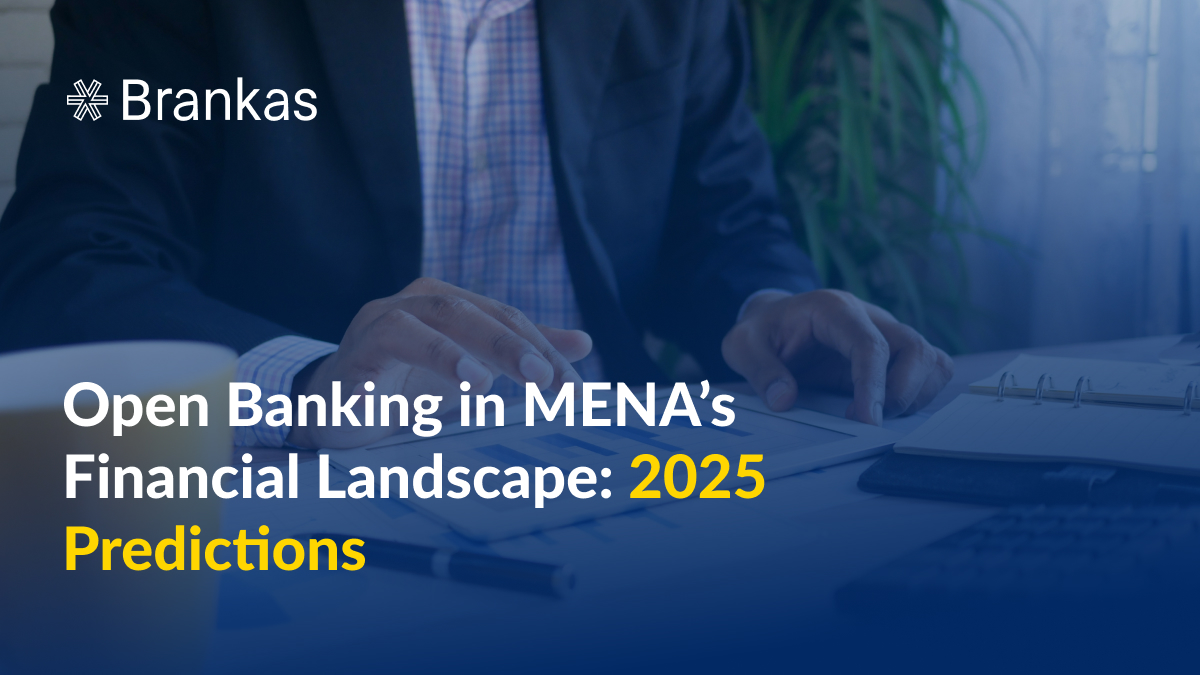The financial sector in the Middle East and North Africa (MENA) region continues to experience substantial growth and changes this year. Fintech and open banking are crucial in this rapid transformation, promising greater financial inclusion and innovation.
So, what can we expect in 2025? Let’s take a closer look at the trends and predictions for open banking in MENA’s financial landscape.
The Rise of Open Banking
Open banking’s growth in MENA countries is gaining momentum. The region has a vision of becoming a new hub for fintech companies, with countries like Bahrain, Saudi Arabia, and the United Arab Emirates leading the charge. What does the data say?
The numbers do not lie: fintech revenues in the MENA region are expected to grow $4.5 billion by 2025, while Saudi Arabia’s Vision 2030 program aims to increase cashless payments to 70% in the same year. According to the World Bank’s Global Financial Inclusion Data Bank, formal credit has been much more accessible to the youth.
These numbers show that MENA is uniquely positioned to create a favorable environment for the advancement of financial products and services. There’s still much work to be done, but with open banking paving the way in key markets, great things are surely on the horizon.
2025 MENA Open Banking Trends
The future of open banking in MENA countries will redefine how banks, businesses, and consumers go about their financial interactions. Here are the trends to watch out for this year:
1. Regulatory Expansion Will Accelerate the Adoption of Open Banking
Regulatory bodies in MENA used to be focused on policymaking, but in 2025, they are shifting to promote effective execution instead. Countries like Saudi Arabia, the UAE, Bahrain, and Egypt have already taken significant steps in introducing frameworks that drive innovation and financial inclusion for open banking in financial services. We expect more MENA nations to follow in their footsteps and implement policies that will standardize APIs and enhance data security.
2. Personalization is King
Personalization in financial services and products shows no signs of slowing down. Open banking will continue to enable banks and fintechs to leverage customer data to create bespoke products, such as dynamic loans and customized savings plans. This level of personalization will drive customer engagement and build trust and loyalty.
3. AI Integration
Artificial intelligence will play a crucial role in the growth of open banking in MENA countries. As technology evolves and interconnectivity progresses, so do the threats to customer data. AI is set to enhance fraud detection and risk assessment to safeguard critical cybersecurity infrastructure. AI-powered chatbots and virtual assistants will improve customer service, while predictive analytics will help financial institutions develop more effective lending and investment strategies.

4. Democratized Lending
Gone are the days when lenders only relied on credit scores to assess a borrower’s creditworthiness. Access to credit will become more inclusive as open banking solutions make financial data more transparent and readily available.
5. SMEs and Retailers Will Benefit
The benefits of open banking will trickle down to small and medium-sized enterprises (SMEs) and retailers. Real-time financial insights, simplified payment processing, and improved access to credit will enable them to scale operations more effectively. Expect digital invoicing, automated reconciliation, and embedded financing to become standard features in business banking.
6. A Push for Interoperability and Security
As open banking in MENA countries unfolds, regulators and financial institutions will prioritize seamless interoperability between systems. Secure and standardized APIs will allow for more efficient cross-border transactions and data sharing, while sophisticated cybersecurity measures will ensure compliance and customer trust. Expect better biometric authentication and real-time fraud detection to become industry standards.
7. Collaboration Between Banks and TPPs
In 2025, collaboration between banks and third-party providers (TPPs) is set to accelerate in Saudi Arabia. This partnership bridges the gap between traditional financial institutions and agile fintech startups. Such collaborations enable solutions like real-time payments, enhanced credit assessments, and personalized financial products.
8. Open Finance Will Gain Traction Beyond Banking
Open finance platforms will expand data-sharing capabilities into insurance, wealth management, and investment services. Consumers will benefit from more integrated financial planning, while businesses will have more options for managing multi-service financial ecosystems. By 2025, open finance will transform the way financial services work. This will result in more holistic and customer-centric solutions.
9. Shift to Alternative Payment Methods
The rise of direct bank transfer solutions and other alternative payment methods will reduce reliance on traditional card networks. For instance, e-commerce payments will become even more hassle-free for consumers. Businesses and consumers will benefit from lower transaction costs and faster settlements.
10. Enhanced Financial Literacy
With the rise of open banking, financial literacy is no longer a luxury but a necessity. Governments, banks, and fintechs will invest in educating consumers and companies about the benefits of open banking in MENA nations, allowing them to make more educated financial decisions.
Regulatory Advancements and Key Players
Several countries in the MENA region are making significant strides in open banking. These nations are expected to spearhead open banking trends in 2025:
Bahrain
A pioneer in the open banking movement, Bahrain’s Economic Development Board (EDB) predicts a substantial increase in users worldwide, highlighting the region’s potential.
Saudi Arabia
The Saudi Central Bank (SAMA) has published an Open Banking Framework that mandates banks to make their account information APIs available.
UAE
The CBUAE has launched initiatives to advance open finance, including Project Aperta, which has been designed to improve the transparency and accessibility of digital finance services. Emirates NBD launched its API Sandbox in 2018, becoming the first bank in the UAE to enable open banking collaboration.

Open Banking Challenges to Overcome
These key players are poised to lead the next wave of fintech growth in MENA, but several challenges could impact their influence. Here are some challenges to watch out for:
1. Regulatory Fragmentation
Each MENA country has unique open banking policies, complicating cross-border cooperation. Harmonizing policies and maintaining compliance across jurisdictions remains a key challenge.
2. Data Privacy and Security Concerns
Consumers and institutions are concerned about data breaches and misuse. Improving cybersecurity safeguards and fostering trust in secure data-sharing systems are crucial.
3. Legacy Infrastructure
Many banks still use outdated systems. This makes API integration challenging. Upgrading core banking systems and ensuring smooth communication will be critical to open banking success.
4. Monetization and Sustainable Business Models
While open banking creates new revenue streams, many organizations fail to properly commercialize data-sharing services. Developing distinct value propositions and pricing strategies is a must.
Way Forward: Why These Trends Matter
Overall, the outlook for open banking in MENA countries is strong. MENA nations must balance regulatory reforms with market-driven approaches to fully capitalize on their economic potential. Additionally, these 2025 trends are not just fleeting or superficial. They highlight a broad objective in the MENA region—fostering financial inclusion, improving transparency, and creating a more dynamic and competitive financial ecosystem. Open banking’s growth in MENA is set to close the gap between traditional and digital finance, ensuring that everyone has an equal opportunity to access credit, payments, and financial services.
What does this mean for the global financial ecosystem? These 2025 predictions for open banking in MENA will ripple out into other parts of the world. MENA’s commitment to be a global fintech leader signals broader shifts, pushing other countries to follow suit and adopt successful models to stay competitive. This acceleration might put pressure on regulators globally to modernize policies and foster cross-border innovation. Ultimately, MENA’s strategic moves could set new benchmarks for interoperability, security, and personalized customer experiences.
As open finance expands, it will unlock new opportunities beyond banking and contribute to a more inclusive and financially literate society.

Embracing Open Banking Growth
At Brankas, we are ready for these changes. Our open finance suite provides a cutting-edge solution to help financial institutions and fintechs navigate the MENA open banking landscape. Whether you need fund disbursement, full banking compliance, or a plug-and-play scalable APIs, we got you covered. As MENA drives innovation, global players must remain agile. Brankas provides the APIs and infrastructure to do just that.
Request a free demo or contact us today.
